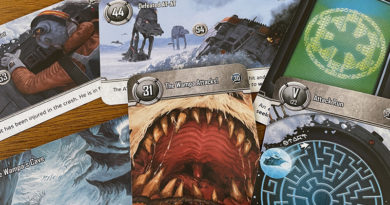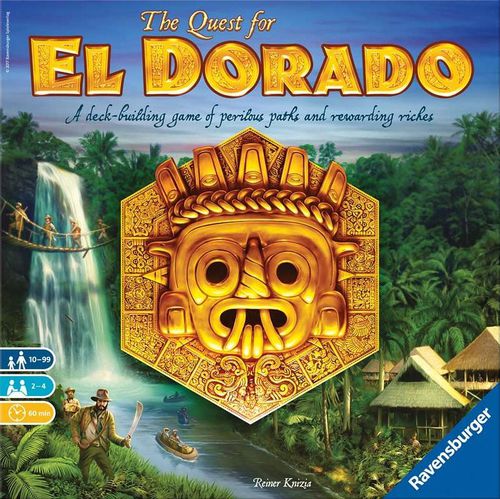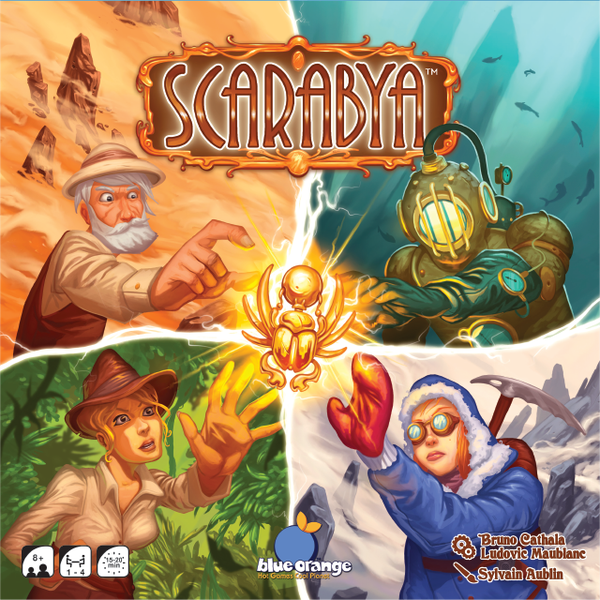Back to the Future: Back in Time cooperative game review
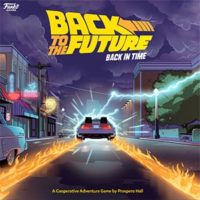
I was a teenager when the first Back to the Future movie hit the big screen in 1985. And I remember absolutely loving the movie!
The premise was a lot of fun and I laughed the whole time.
I didn’t like the 2nd movie and thought the 3rd movie was good. But that first movie became a cultural iconic film that’s still fun to revisit to this day.
That also explains why a bunch of Back to the Future games have been made since.
Unfortunately, the few I’ve played over the years haven’t been very good games.
That is, until now!
Back to the Future: Back in Time, by Funko, breaks that mold. As a cooperative board game, it delivers the right type of gameplay for the theme — making a fun game!
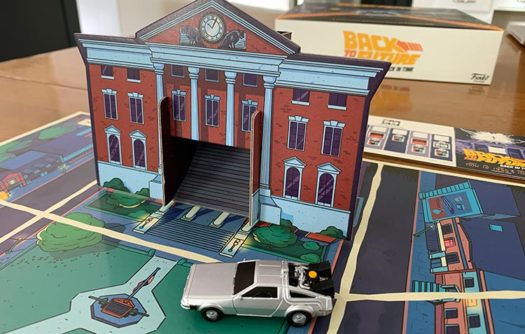
How to play Back to the Future: Back in Time
Back to the Future: Back in Time is a cooperative board game where players work together to get George and Lorraine to fall in love while also getting the DeLorean in position before lightning strikes the Clock Tower at 10:04 pm.
The game is played over a number of rounds depending on the number of players. No matter the number of players though, the game ends when the Turn Tracker reaches the space marked 10:04 pm.
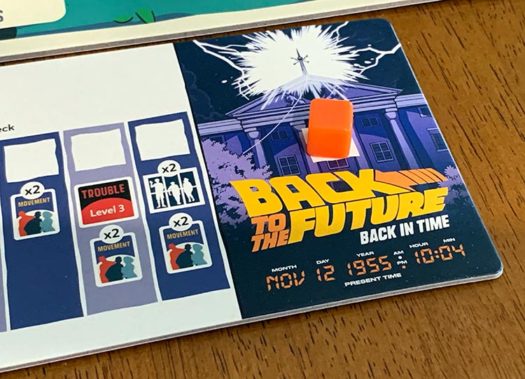
Set up
To begin, players choose which character they want to be: Marty McFly, Jennifer Parker, Doc Brown, or Einstein (the dog). They take that character’s player board and starting Power tokens and place their character piece in Town Square.
The Biff character piece begins at the Clock Tower and Lorraine and George both begin at their homes. And the 6 family Photo sections are placed face-up on the Love Meter board.
Movement, Opportunity, and Trouble card decks are also shuffled and set to the side of the board in their separate piles. The DeLorean and DeLorean parts are all set in their start spaces as well as the top 3 Opportunity cards from the deck.
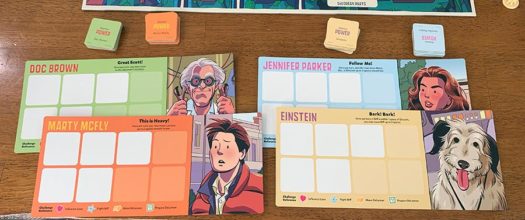
Player Turns
On a player’s they first move the Turn Tracker marker forward one space and do what’s indicated below that space. It may include placing a new Trouble card on the board or checking the Love Meter and it will always require drawing at least 1 Movement card.
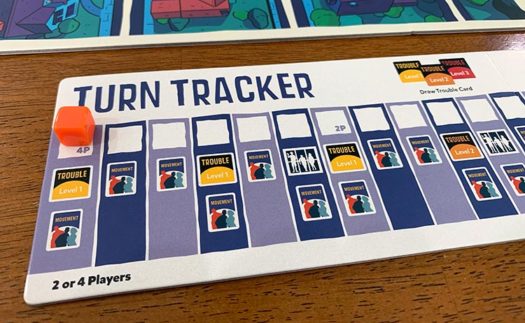
When drawn, a Trouble card will indicate where to place it as well as what problem it causes and how to fix it.
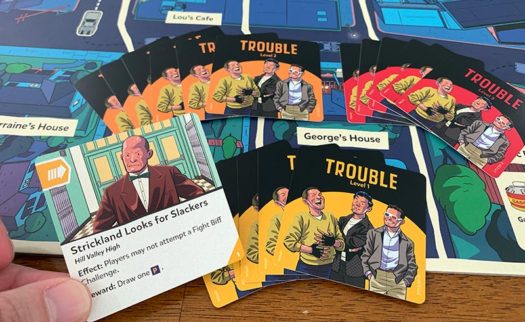
When the Love Meter is checked, players see if the Love Meter marker is below the Heart section. If so, one of the face-up Photo sections must be flipped over. (If they all get flipped over, players lose the game.)
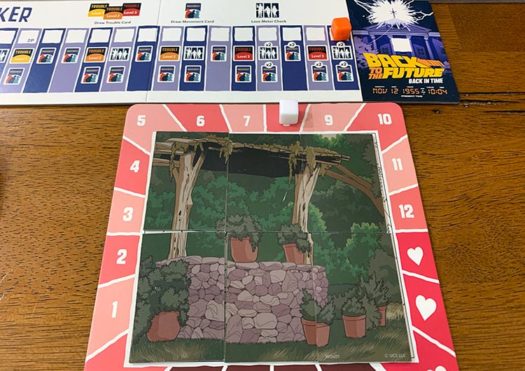
When a Movement card is drawn, players move the indicated character accordingly. These cards will show Lorraine, George, or Biff or various combinations of them. The card will say which direction to move Lorraine or George around the board. For each Biff face symbol, Biff will move one space closer to Lorraine or George (toward the closer one). Once Biff is in a space with Lorraine or George, each Biff face symbol moves the Love Meter marker backward one space. (Because he’s messing with them falling in love.)
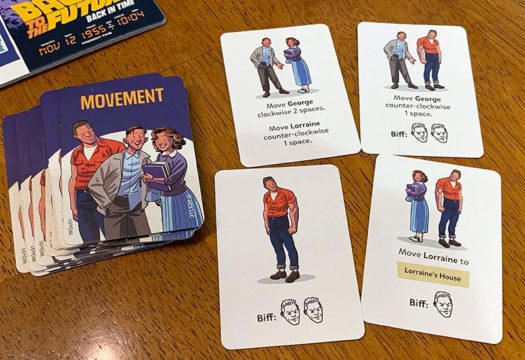
After doing those necessary steps, the player uses their Power tokens to take action!
Power tokens indicate on them how they can be used. They’ll involve either moving or rolling dice. For example, one Power token will either let you move 3 spaces or roll a certain color of die. Some Power tokens grant abilities to modify dice results. Once used, the Power token is placed face-down on the player’s board.
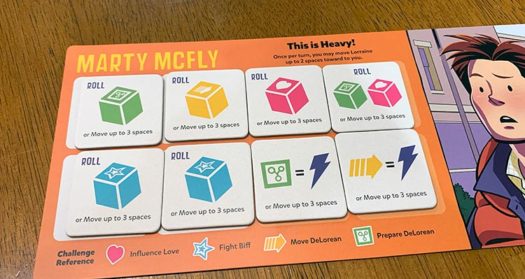
When moving, a player may escort the Lorraine or George piece with them.
While on a space, the player may roll dice to attempt the challenge in that location. These challenges may include Influencing Love, Fighting Biff, Moving the DeLorean, fixing Trouble, or taking an Opportunity.
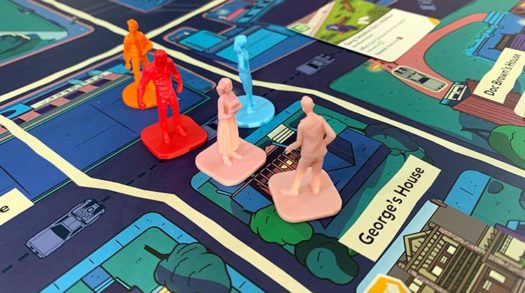
In each case, players are trying to get certain results on the dice they roll. They may be trying for Hearts for the Love challenge, Stars for fighting Biff, Speed for moving the DeLorean, and various combinations to overcome Trouble and get good things from Opportunities.
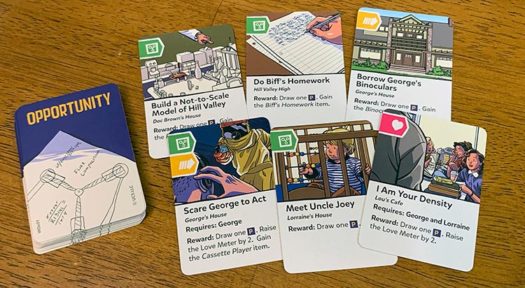
When rolling dice, every Biff face rolled must be set aside and can’t be re-rolled. Any other dice results can be re-rolled if the player chooses. (They just run the risk of rolling more Biff faces.) Players resolve their advantageous dice first for the challenge they attempted, then they resolve the Biff faces (by moving Biff, etc.).
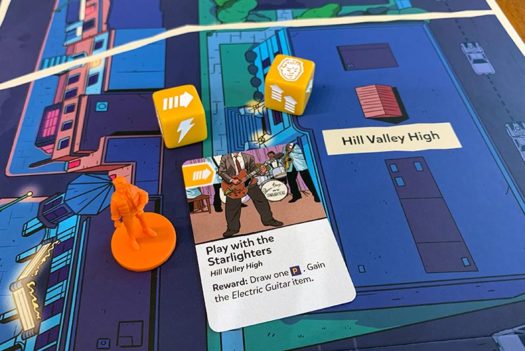
If players are at the same location as another player, they can assist that player by using their own Power tokens to add dice to a challenge. However, that means they won’t be able to use those Power tokens when it comes to their own turn. Because players don’t refresh their Power tokens until the end of their turns.
Once per turn, the player can also use the special ability on their player board as well as abilities of Item cards they’ve collected.
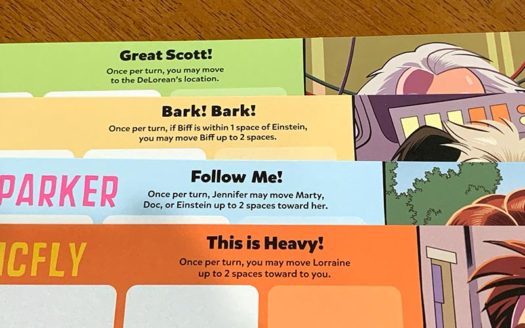
At the end of a player’s turn, they refresh all of their Power tokens back to their face-up side. Then it’s the next player’s turn. Play continues like this until the end of the game.
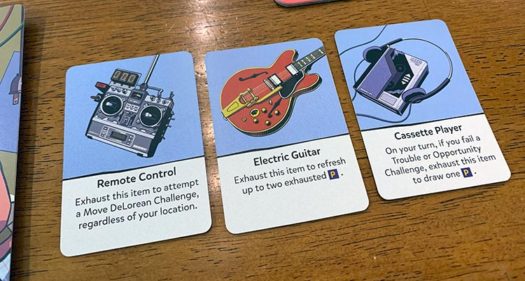
Game End
The game can end in one of two ways:
1. The 6th and final section of the family Photo is flipped face-down so that Marty and his siblings disappear forever. The game ends immediately and the players all lose.
2. The Turn Tracker cube moves into the final space — 10:04 pm and lightning strikes the Clock Tower.
If the Love Meter marker is in the Heart Zone and the DeLorean is in the Ready Zone, the players all win!
However, if when that final space is reached and the Love Meter marker isn’t in the Heart Zone and/or the DeLorean isn’t in the Ready Zone, the players all lose.
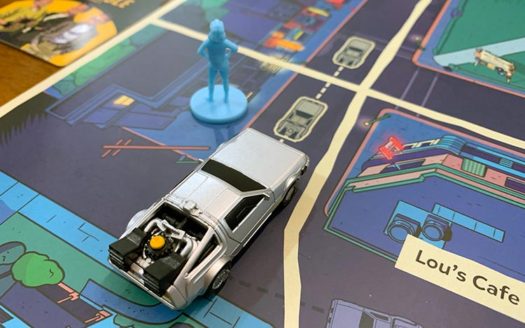
Can the whole family enjoy Back to the Future: Back in Time?
Back to the Future: Back in Time is a great game for the whole family to play together. For starters, it’s a cooperative game — which is great for family play.
Secondly, it’s got a great mix of strategy and luck.
Players need to work together well to coordinate their efforts in getting Lorraine and George together, keeping Biff away from them, and getting the DeLorean moving along. This will take some strategic planning. But they’ll also be impacted by the luck of the cards drawn and the dice rolls.
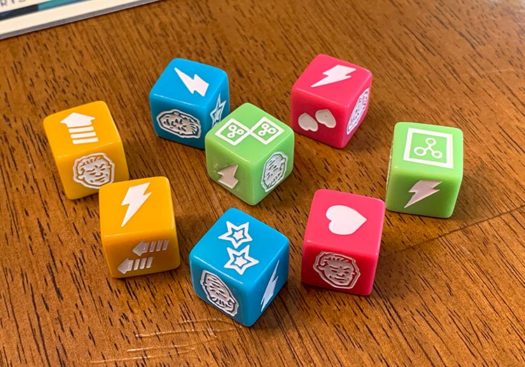
Looking ahead to what’s coming up on the Turn Tracker is also key to doing well. This will tell when to expect more trouble or when a Love Check is about to happen.
Things also heat up as the game heads into the final few turns. There are some spaces on the Turn Tracker where 2 Movement cards will be drawn and the Love Check will happen twice.
So coordinating your efforts in where to move and when to face different challenges will be essential. Since each Movement card may move Lorraine, George, and/or Biff, you’ll want to get things in position at the end of one player’s turn based on where those characters might move on the next turn. Then you’ll be ready to react better.
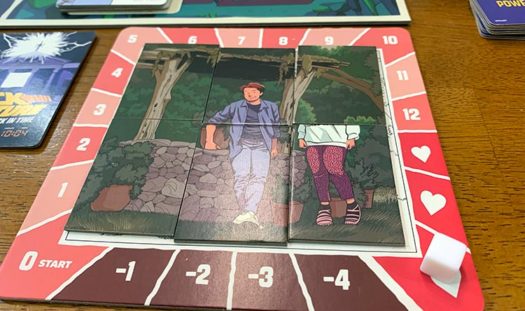
The Opportunity cards are also great to take advantage of because they grant special Item cards and more Power tokens. The more Power tokens you have, the more you’ll be able to do on all your future turns.
And the Trouble cards can definitely cause problems. There are 3 different levels of Trouble cards and the severity of trouble escalates with each level. So being ready to fix them when they pop up is a very good thing.
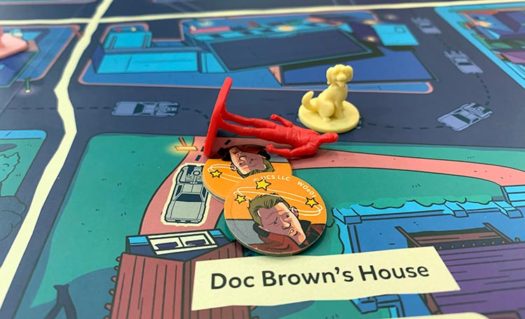
The special character abilities are also extremely helpful during the game. You might think a dog can’t do much, but Einstein’s special ability can be awesome for keeping Biff away from Lorraine and George. Doc’s ability essentially lets him teleport to wherever the DeLorean is. And Marty and Jennifer can move different characters up to a certain number of spaces.
The first time we played the game we thought we were in trouble early. Neither the Love Meter nor the DeLorean were getting anywhere very fast. But then we got on a roll and things started clicking. We each had gained plenty of additional Power tokens and were making things happen!
We got both the Love Meter marker and the DeLorean in their proper spaces with a couple turns still to go on the Turn Tracker. All we had to do was keep them in position for the last couple turns — which we successfully did.
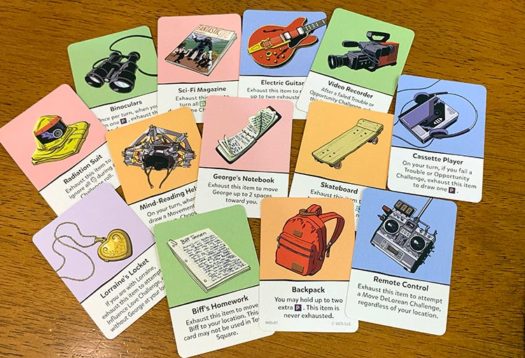
The second game we played, however, didn’t go as well. We thought we were doing okay with moving things steadily along. We end got the Love Meter marker to the space just before the Heart Zone with many turns still to go. However, big Trouble struck and Biff faces were rolled aplenty — causing the Love Meter marker to spiral downward. If that weren’t enough, one Trouble sent the DeLorean back a couple spaces. And then we started hitting the double Love Checks and the last family Photo tile was flipped over. Marty and his siblings ceased to exist!
Yet we had a great time anyway.
And that’s what makes for great family game time — having fun along the way regardless of the outcome.
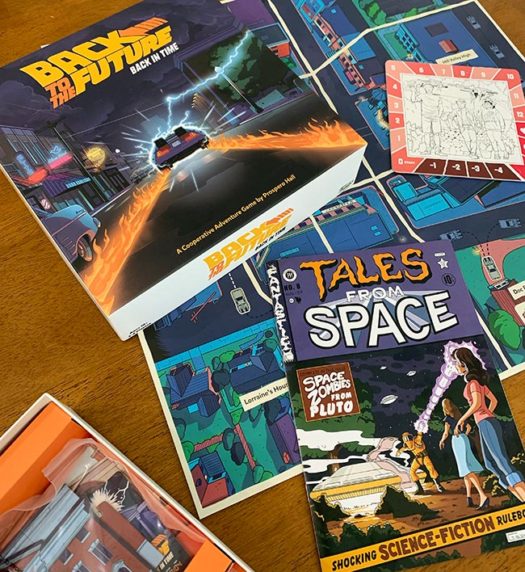
How does Back to the Future: Back in Time score on our “Let’s Play Again” game meter?
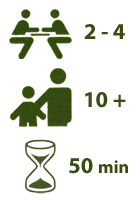 Back to the Future: Back in Time scores high on our “let’s play again” game meter because no game is the same. Sure the general gameplay is the same every time — move characters, get Lorrain and George in love and the DeLorean ready — however, the variety of Trouble and Opportunities plus the random dice results will have you reacting in different ways every game.
Back to the Future: Back in Time scores high on our “let’s play again” game meter because no game is the same. Sure the general gameplay is the same every time — move characters, get Lorrain and George in love and the DeLorean ready — however, the variety of Trouble and Opportunities plus the random dice results will have you reacting in different ways every game.
Like I mentioned at the beginning, the gameplay of this Back to the Future game is a perfect fit for the theme — with players working together to get Marty back in time!
We’d like to thank Funko for a review copy of Back to the Future: Back in Time.



